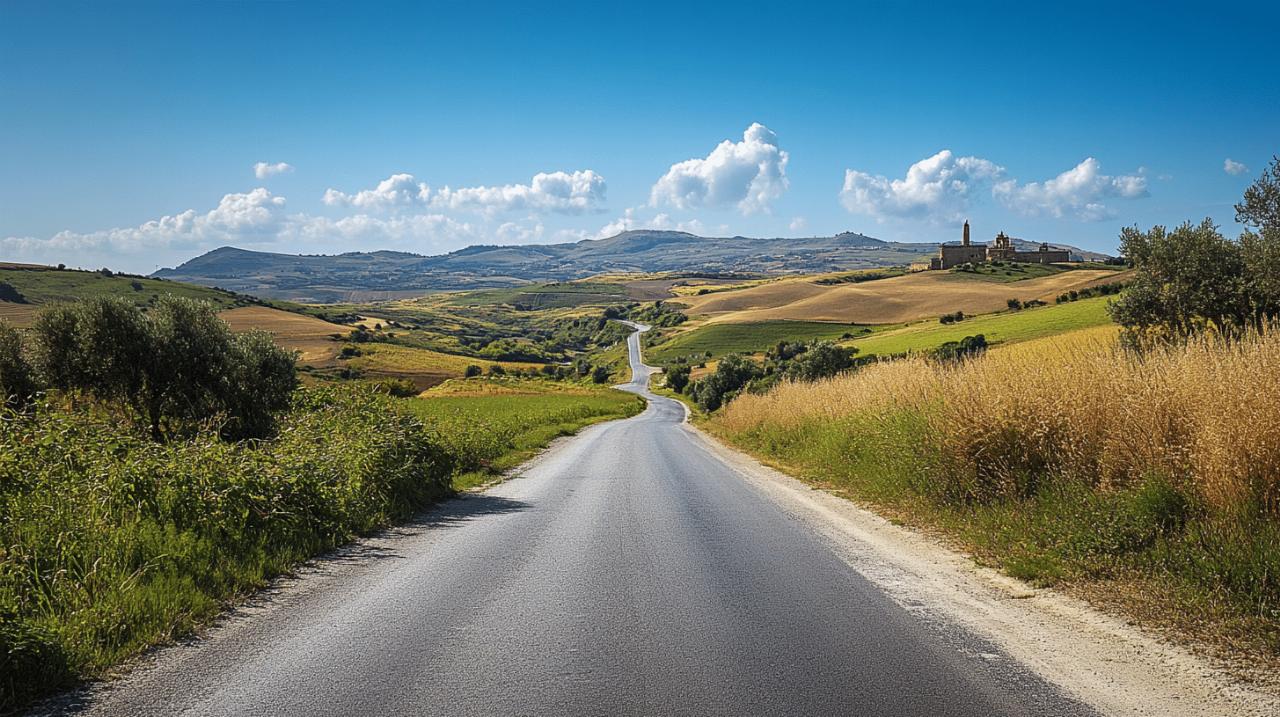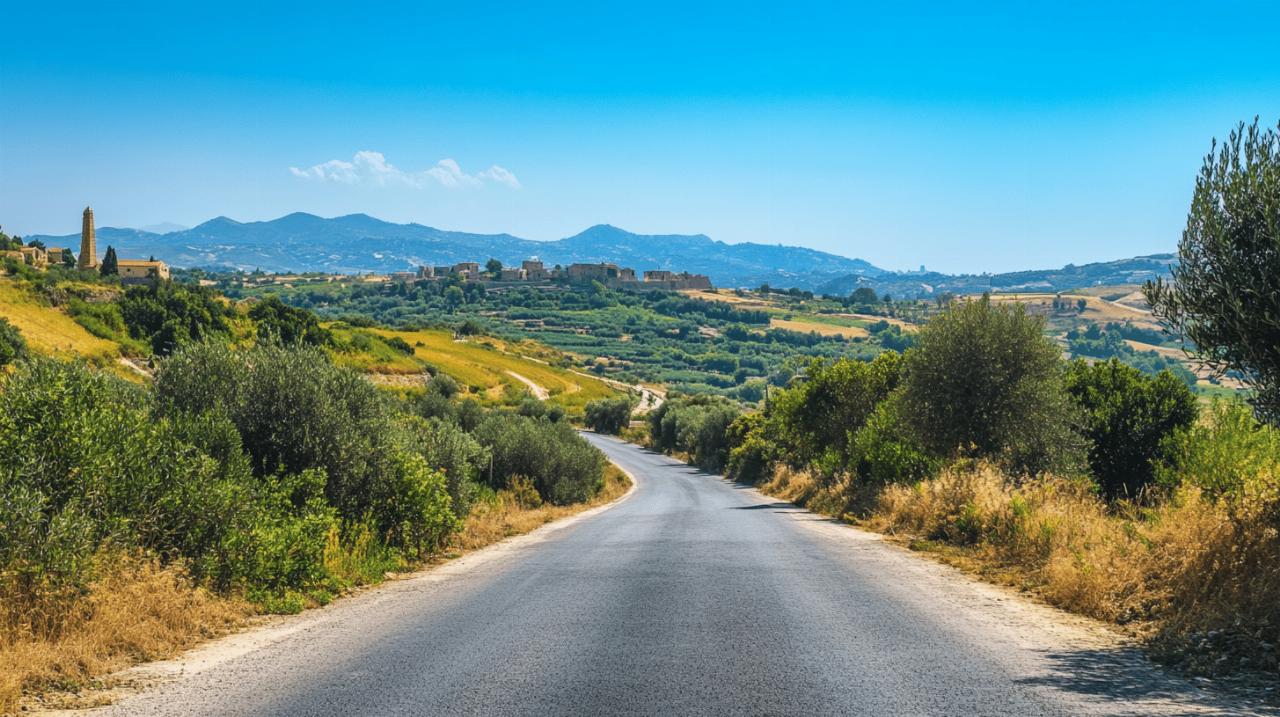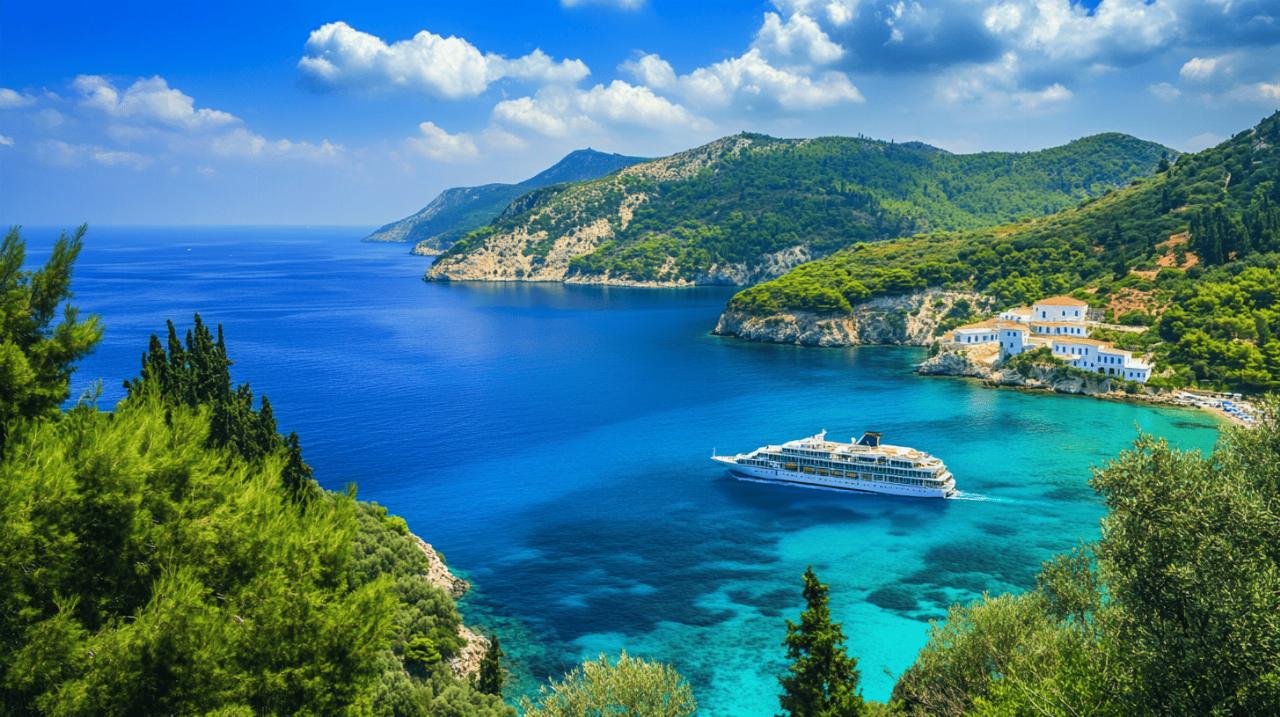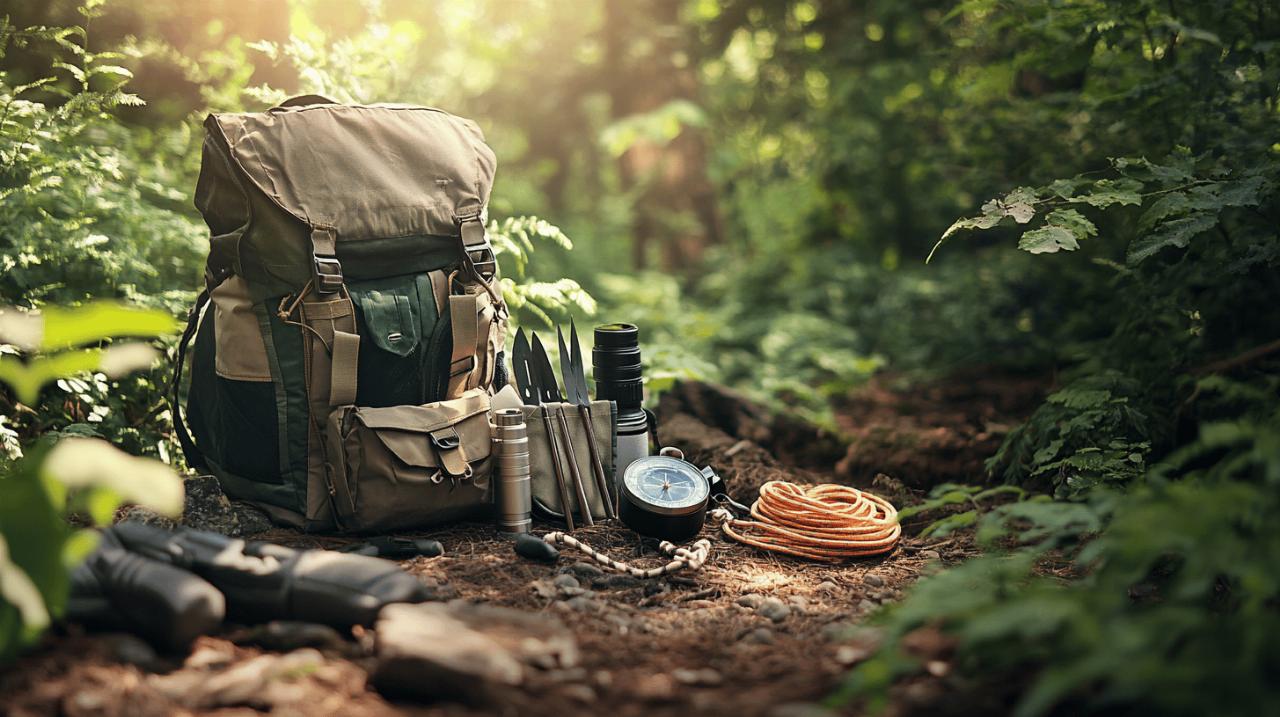Picture yourself trading the grey skies of London for the sun-drenched landscapes of southern Sicily, where ancient ruins stand proudly against azure backdrops and winding coastal roads promise adventure at every turn. This journey from Syracuse to Agrigento offers an extraordinary opportunity to immerse yourself in history, culture, and breathtaking scenery without emptying your wallet. With a hire car at your disposal and a flexible itinerary in hand, you can explore at your own pace, discovering hidden gems and iconic landmarks that make this corner of the Mediterranean truly unforgettable.
Planning Your Sicilian Adventure: Getting Started on a Budget
Booking your hire car: finding the best value deals
Securing a car rental is essential for navigating the diverse terrain between Syracuse and Agrigento, and finding a value-for-money option can significantly reduce your overall costs. Begin your search well in advance, comparing rates across different providers and considering one-way rentals if your itinerary permits. Opting for a smaller vehicle not only saves money on the rental itself but also proves advantageous when manoeuvring through the narrow streets and tight parking spaces that characterise many Sicilian towns. Full insurance coverage is strongly recommended, as driving in Sicily can present unique challenges, from aggressive local driving habits to unfamiliar road layouts. Downloading a local parking app before your trip can spare you the frustration of deciphering payment systems on the spot, ensuring your focus remains on the journey ahead rather than logistical headaches.
When to Visit: Timing Your Trip for Maximum Savings
April emerges as the ideal month for exploring this region, offering pleasant temperatures, blooming landscapes, and fewer crowds than the peak summer season. Travelling during this shoulder period not only enhances your experience at archaeological sites and coastal attractions but also translates to lower accommodation rates and more availability. Spring weather in Sicily is generally reliable, providing comfortable conditions for both driving and walking tours without the sweltering heat that can make midday exploration exhausting. By avoiding the high season, you also sidestep inflated prices at restaurants and tourist spots, allowing your budget to stretch further while still enjoying everything this captivating island has to offer.
Syracuse to Catania: Ancient Wonders and Urban Charm
Exploring Ortigia and the Neapolis Archaeological Park
Syracuse serves as an enchanting starting point, with the historic island of Ortigia capturing imaginations through its labyrinth of narrow alleys, baroque architecture, and sparkling waterfront. Wandering through Piazza del Duomo, you encounter the Syracuse Cathedral, a remarkable structure built upon the foundations of an ancient Temple of Athena, seamlessly blending classical columns with later Christian additions. The nearby Temple of Apollo, dating back to the sixth century before the common era, stands as one of the oldest Doric temples in Sicily, its weathered stones telling stories of millennia past. A stroll along the waterfront leads to the Arethusa Spring, a natural freshwater fountain surrounded by papyrus plants, steeped in Greek mythology. For a different perspective, consider a boat tour of the harbour, which reveals the Castello Maniace, a fortress constructed in the thirteenth century, from the sea. Just beyond the island, the Neapolis Archaeological Park demands attention with its impressive Roman and Greek theatres, the latter carved directly into the hillside and still used for performances today. This proper step back in time allows you to walk the same paths as ancient spectators, imagining the dramas and ceremonies that once unfolded in these magnificent spaces.
Catania's gritty character and mount etna excursions
Continuing northward, Catania presents a striking contrast to Syracuse's refined elegance. This bustling city, nestled at the foot of Mount Etna, exudes a raw energy characterised by its volcanic stone buildings, vibrant markets, and lively piazzas. While it may lack the polish of more tourist-oriented destinations, Catania possesses an authentic charm that rewards those willing to explore its streets and engage with its residents. The city's baroque churches and palaces, rebuilt after devastating earthquakes, showcase resilience and architectural creativity. When weather conditions permit, a guided excursion up Mount Etna offers an unforgettable experience, taking you through lunar landscapes and craters that demonstrate the ongoing volcanic activity shaping this region. The journey up Europe's most active volcano provides not only geological insights but also panoramic views stretching across the island and out to sea, making it a highlight worth prioritising in your itinerary.
The Northern Route: Taormina and the Sicilian Countryside
Taormina's stunning views and photo-worthy spots
 Venturing further north, Taormina perches dramatically on a clifftop, offering vistas that have captivated visitors for centuries. This elegant resort town, with its boutique shops and refined restaurants, may skew slightly upmarket, but its natural beauty and historical significance justify the visit. The Greek Roman Theatre, positioned to frame Mount Etna and the Ionian Sea, creates one of the most photographed scenes in Sicily. Walking along the pedestrianised Corso Umberto, you pass medieval buildings, flower-draped balconies, and inviting cafés where you can pause to savour an espresso while absorbing the atmosphere. A short excursion to Castelmola, perched even higher above Taormina, rewards you with almond wine and even more spectacular panoramas. For film enthusiasts, the nearby village of Savoca offers a pilgrimage to locations featured in The Godfather, adding a cinematic dimension to your cultural exploration.
Venturing further north, Taormina perches dramatically on a clifftop, offering vistas that have captivated visitors for centuries. This elegant resort town, with its boutique shops and refined restaurants, may skew slightly upmarket, but its natural beauty and historical significance justify the visit. The Greek Roman Theatre, positioned to frame Mount Etna and the Ionian Sea, creates one of the most photographed scenes in Sicily. Walking along the pedestrianised Corso Umberto, you pass medieval buildings, flower-draped balconies, and inviting cafés where you can pause to savour an espresso while absorbing the atmosphere. A short excursion to Castelmola, perched even higher above Taormina, rewards you with almond wine and even more spectacular panoramas. For film enthusiasts, the nearby village of Savoca offers a pilgrimage to locations featured in The Godfather, adding a cinematic dimension to your cultural exploration.
Detours worth taking: madonie national park and hidden gems
Between the major stops, the Sicilian countryside unfolds in a tapestry of olive groves, citrus orchards, and medieval hill towns that beckon exploration. A detour to the Madonie National Park introduces you to a different facet of the island, where rugged mountains, ancient forests, and traditional villages preserve a way of life largely untouched by mass tourism. This natural sanctuary provides opportunities for hiking, birdwatching, and simply breathing in the crisp mountain air away from coastal crowds. Smaller towns such as Noto, Modica, and Ragusa showcase extraordinary baroque architecture, their honey-coloured stone buildings cascading down hillsides in a display of urban planning that earned UNESCO recognition. These locations offer authentic experiences, from family-run trattorias serving regional specialities to artisan workshops where traditional crafts continue to thrive. Taking time to wander these less-visited places enriches your journey, revealing layers of Sicilian culture and history that complement the marquee attractions.
Agrigento and Beyond: Finishing Your Journey in Style
The Valley of the Temples: A UNESCO Heritage Experience
Arriving in Agrigento, you reach the culmination of your road trip at one of the Mediterranean's most significant archaeological sites. The Valley of the Temples sprawls across a ridge overlooking the sea, presenting a collection of Greek temples that rival anything found in Greece itself. The Temple of Concordia stands remarkably intact, its honey-toned columns glowing warmly in the Mediterranean sun, particularly enchanting during the golden hour before sunset. The Temple of Juno, constructed around the middle of the fifth century before the common era, occupies a commanding position at one end of the site, while the Temple of Heracles, the oldest structure dating to the sixth century, displays the weathered beauty of extreme age. The Temple of Olympian Zeus, though now largely in ruins, once ranked as the largest Doric temple ever built, its scale still evident in the scattered column drums and the famous stone figure. Spending time wandering this archaeological park, especially in the early morning or late afternoon when crowds thin and light softens, creates a profound connection to the ancient civilisations that shaped this landscape. The nearby archaeological museum complements your visit by displaying artifacts that provide context and detail to the stones outside, including the impressive Telamon figure and collections of pottery, sculptures, and everyday objects from antiquity. For those seeking a truly special experience, staying at a hotel within the Valley of the Temples allows you to access the site outside normal hours, watching the temples transform under changing light and enjoying a tranquillity impossible during the day.
Extending Your Adventure: Scala dei Turchi, Palermo, and the Egadi Islands
Should your schedule allow, extending your journey westward opens up additional treasures that reward the extra days. The Scala dei Turchi, a striking natural formation of white marl cliffs descending in terraces to turquoise waters, provides a dramatic coastal stop perfect for photographs and a refreshing swim. Continuing to Selinunte reveals another extensive archaeological site, where Greek temples stand in evocative ruins overlooking the sea, their isolation adding to their mystique. The drive northward brings you to Marsala, Trapani, and the salt pans that shimmer in the coastal light, with the possibility of ferry trips to the Egadi Islands for pristine beaches and crystal-clear waters. Further along the northern coast, Palermo awaits with its complex layers of history, from Norman palaces and Byzantine mosaics to bustling street markets and puppet theatres. The Norman Palace houses the stunning Palatine Chapel, its walls encrusted with golden mosaics depicting biblical scenes, while the Cathedral combines architectural elements from successive eras in a fascinating if sometimes jarring whole. Just outside the city, Monreale Cathedral presents one of the finest examples of Norman architecture, its interior completely covered in mosaics that shimmer with gold leaf and vibrant colours. The charming coastal town of Cefalù, with its impressive Norman cathedral constructed in the early twelfth century and its clifftop castle offering sweeping views, makes an excellent day trip. Erice, perched atop a mountain with vertiginous views, enchants visitors with its medieval atmosphere and famous almond pastries. These extensions transform your road trip into a comprehensive exploration of Sicily's western regions, each location adding distinctive flavours to your travel memories.





